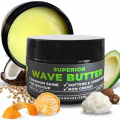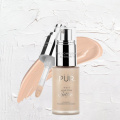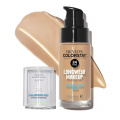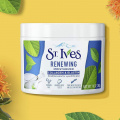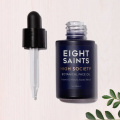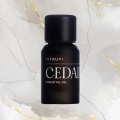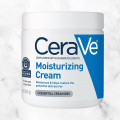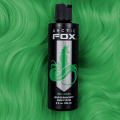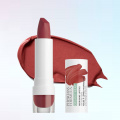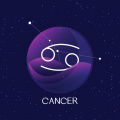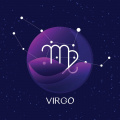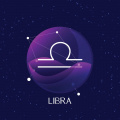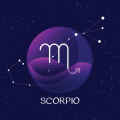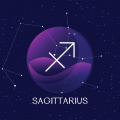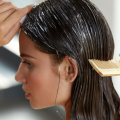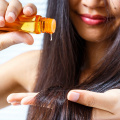Find the Most Effective Home Remedies for Angular Cheilitis Here! They Really Work!
Angular cheilitis is a skin condition that appears as red patches on the corners of the mouth. Check out some effective home remedies for angular cheilitis here!
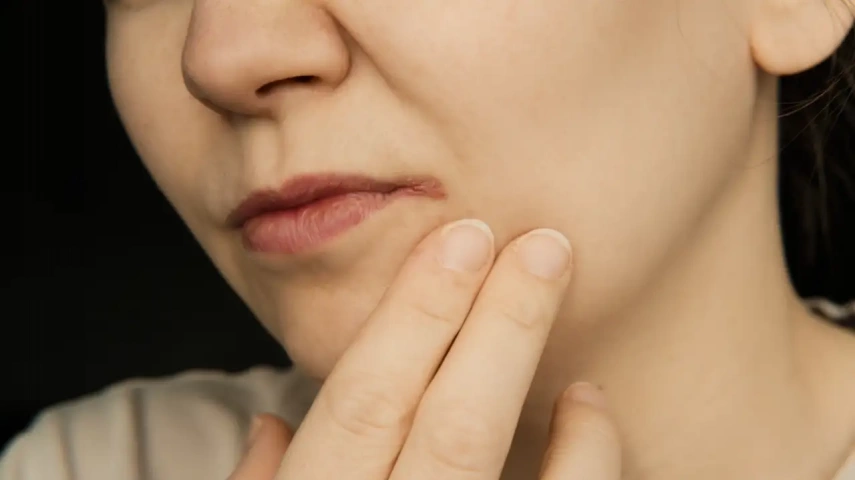
Any form of skin disease or skin condition can present myriad problems and hinder day-to-day life. Whether it’s that patch on the elbow, that annoying perpetual itch on the arms, those red and flaky patches all around the body, or sore on the corners of the mouth, skin conditions get in the way of our daily activities or make us overly conscious about our appearance. Angular cheilitis is one such skin condition that affects how we go about our day, especially because it hampers our ability to eat in peace and our ability to communicate.
Don’t fret yet. It’s a pretty common condition and there are many home remedies for angular cheilitis that can help clear up the problem in no time. There are some risk factors of angular cheilitis but we’ll get to that in a moment along with some tried and tested home remedies for angular cheilitis home treatment.
What is Angular Cheilitis?
Angular cheilitis is an inflammatory skin problem that occurs on the corners of the mouth. It is often considered a symptom for other conditions (1). Infants and the elderly are more susceptible to this as their jaw muscles are weak. It starts at the muco-cutaneous junctions and spreads to the skin (2). Also known as angular stomatitis and is characterized by ulceration and crusting at the commissures which are the joints between two bones of the mouth.
What Causes Angular Cheilitis?

The following are the possible causes for angular cheilitis (3):
- Loss of firmness of skin due to age, smoking, weight loss, etc.
- The altered vertical dimension of the skin due to tooth wear, ill-fitting dentures, and lack of or falling teeth.
- Marionette lines.
- Conditions that lead to enlarged lips.
- Tongue protrusion and drooling.
- Bacterial infections from using expired products or products not suited to a specific skin type.
- Poor hygiene practices.
- Diabetes; since it may cause an overgrowth of Candida, a yeast, due to increased salivary glucose levels.
- Nutritional deficiencies.
- Chronic steroid use.
- Vitamin B and trace mineral deficiencies.
- Protein malnutrition.
- Aggressive dental flossing.
- Thumb sucking.
- Use of fragrance containing cosmetics or skin care products.
- Repeated lip licking.
- Recurrent herpes infection.
What are the Symptoms of Angular Cheilitis?
Most make the mistake of assuming angular cheilitis is a common cold sore since both conditions look similar. However, symptoms of angular cheilitis include (4):
- Localized lip inflammation is concentrated at the corners of the mouth.
- Mild irritation along with a dry, itchy, or burning sensation.
- Sharp pain when opening the mouth.
- Red or pink patches on the skin along with chapped lips.
- Crusty skin patches.
- If the conditions worsen, moisture causes the patches to look gray-white and bumpy.
- In extreme cases, the bumps may lead to bleeding.
- Dry peri oral area.
What are the Risk Factors for Angular Cheilitis
1. Stress

In rare events, stress can be the cause of cheilitis; most likely through behavior reflecting self-harm (5). Factitial cheilitis, a subtype of contact cheilitis, is usually triggered by a stressful event. A case report showed that depression and stress could be a possible reason for cheilitis (6).
2. Inflammatory Bowel Disease (IBD)
An inflammatory bowel disease causes ongoing inflammation in all or some parts of the digestive tract. There are mainly two types of IBD, ulcerative colitis and Crohn's disease. Crohn’s disease may affect any part of the GI tract from the mouth to the anus and mostly affects the portion of the small intestine right before the large intestine. Ulcerative colitis affects the large intestine and the rectum.
IBD, and in this case, the Crohn’s disease variety may cause angular cheilitis by aiding malnutrition and hindering the body’s natural wound-healing process (7).
3. Down Syndrome
Those born with Down syndrome are more susceptible to angular cheilitis due to their facial drooping caused by it. A research paper shows that 25% of patients are affected by angular cheilitis because of macroglossia, a condition in which a patient’s tongue is enlarged to over normal sizes, which then leads to drooling and a protruding tongue (8).
4. Poor Diet
A well-balanced meal can be the cure to most of life’s problems and the opposite is also true. Vitamin deficiencies are considered one of the most significant reasons for angular cheilitis (9). For instance, vitamin B2 is crucial as it aids the metabolism of fats, proteins, and carbohydrates.
Trace mineral deficiencies of zinc and iron too cause skin problems.
Discussing the impact of dietary changes, our contributor Mary Sabat, RDN, LD, and Ace Certified Trainer, says, “Dietary changes and supplements can aid in the resolution of angular cheilitis, especially when the condition is related to nutritional deficiencies. Angular cheilitis can be associated with deficiencies in B vitamins, particularly vitamin B2 (riboflavin) and vitamin B3 (niacin). Incorporating foods rich in these vitamins, such as lean meats, dairy products, leafy greens, and nuts, can be beneficial.”
5. Smoking
Many studies show that smoking has been associated with a higher accumulation of Candida species (10). A large overgrowth of this can further lead to oral infections that include conditions like white plaque, thrush, median rhomboid glossitis, and even angular cheilitis. 83% of oral candidiasis patients are moderate to heavy smokers.
Now that we’ve learned the causes, symptoms, and risk factors of angular cheilitis, we can jump into how to fix the problem. Here are some of the best home remedies for angular cheilitis.
Angular Cheilitis Self-Care and Home Remedies
While there is no angular cheilitis overnight cure, these angular cheilitis home treatments will certainly give you relief.
1. Coconut Oil

As coconut oil has antifungal and moisturizing qualities, it’s considered one of the best home remedies for angular cheilitis. Apply a generous amount of cold-pressure coconut oil to the affected areas and let it sit for 30 minutes. Wipe it off with a clean, dry, and soft cloth. Re-apply as and when required.
2. Aloe Vera

Aloe vera is popular for its soothing and healing properties and nourishes the skin from within, making it a trusted angular cheilitis self-care method. Ensure that you use pure aloe vera gel. Refrigerate a spoonful of aloe vera gel and apply it to the sore patches. Wipe it off with a clean, dry towel and apply it again in a few hours. As aloe vera is mild, you can repeat the process several times a day.
3. Jojoba Oil

Another spectacular angular cheilitis home treatment, jojoba oil is a great remedy. Not only is jojoba oil moisturizing, but it’s also antibacterial, non-comedogenic, and hypoallergenic too. Apply a few drops of jojoba oil on the skin condition and let it work its magic for 30 minutes before wiping it off and repeating the process about thrice a day. Alternatively, you can apply jojoba oil right before bedtime and let the healing process take place throughout the night as you catch a good night’s sleep.
4. Garlic

You may be wondering if garlic is a good angular cheilitis natural treatment. It may burn, right? It sounds almost counterintuitive. Well, the good news is that if you mix it with a mild and soothing body lotion or moisturizer, it’s quite effective. Garlic can act as an antimicrobial agent and also has antiseptic properties. Crush a clove of garlic or form a paste and apply a pea-sized amount mixed with lotion or moisturizer. Leave it on for 5 minutes before wiping it off with a damp cloth followed by a dry cloth.
5. Lemon

Unlike garlic, lemon juice will sting. But you don’t have to apply it anywhere near your mouth or in the affected area. Drink a warm glass of lemon juice with hot water, once in the morning, and again at night before bed. You may also add either salt or honey, depending on your preference. Lemons have a high acidic content which helps prevent acne and other skin problems while also having antioxidant properties. It’s a great source of hydration and vitamin C and may also help aid digestion. However, do a patch test beforehand to avoid chances of irritation.
6. Yogurt

We’ve often heard about the several benefits of yogurt for good gut health. Yogurt is rich in protein, calcium, vitamins, and probiotics, making it a superfood to protect the bones and teeth and aid in the metabolism process along with good digestion. Probiotic yogurt may also be a great angular cheilitis at home treatment as it contains live cultures that are beneficial in curing skin problems. Apply a small amount of yogurt to the affected area and let it dry. Once caked, wash it off with lukewarm water and immediately pat the skin dry.
7. Cucumber

Now, you too, can be as cool as a cucumber with a little help from them. Cucumbers are also considered one of the most effective home remedies for angular cheilitis. Cucumbers contain astringent and offer cooling properties to the skin. It also aids collagen levels which helps in cell regeneration. Cut a thin slice of a cucumber and place it on the rashes. You may also rub it gently for a deeper effect.
8. Neem Leaves

Neem leaves boast antiseptic properties. This trusted Ayurvedic herb also has antibacterial and antifungal properties that help treat skin infections and soothe irritated, dry, and patchy skin. You can wash your face with neem-leaf infused water 2-3 times a day to get rid of angular cheilitis naturally. Alternatively, you can crush 5-6 neem leaves to form a paste and apply it to the corners of your mouth. Let it sit for 15 minutes and gently wipe it off. Repeat the process 2-3 times a day.
9. Castor oil

One oil–one million benefits! Like coconut oil, castor oil is also a brilliant angular cheilitis at-home treatment. Castor oil is rich in monounsaturated fatty acid which helps keep the skin moisturized. It also has anti-inflammatory properties which aid in reducing swelling. Castor oil also boasts soothing properties, calms inflammation, and actively fights bacteria, making it a superior angular cheilitis home treatment. As castor oil is generally thick and sticky, it is best to apply it before bedtime and let it sit throughout the night.
10. Olive Oil

You may have noted that many patients dealing with psoriasis are often advised to use olive oil as a home remedy. It’s because olive oil has antioxidants and vitamin E which help reduce redness and irritation caused by acne or psoriasis. Olive oil also moisturizes the skin and fights bacteria, making it a great choice for those looking for angular cheilitis treatments at home. As olive oil is also a thick oil like castor oil, it’s best applied before bedtime. However, if the thickness of the oil doesn’t bother you, apply the oil to the corner of your mouth and let it sit for half an hour before gently wiping it off. You can repeat the process thrice a day. It is best to use cold-pressed olive oil.
11. Honey

Honey is a powerful home remedy that speeds up the healing process for skin conditions. Best known for making hot lemon drinks taste sweeter and better, honey also possesses bacteria-killing properties. It also helps to exfoliate the skin by getting rid of dead cells. Additionally, honey is also antiseptic, anti-inflammatory, and has antioxidant properties. Raw honey promotes good bacteria in the intestines which further aids a healthy digestive tract. Apply a pea-sized amount of honey on your angular cheilitis and leave it for 20 minutes. Wipe it off with cold water and gently pat it dry. You may repeat this process thrice a day. Alternatively, you can consume honey with hot lemon water or herbal teas.
12. Water

Ah, yes! The miracle healer of everything. Skin conditions like angular cheilitis have a sneaky way of showing up and reminding us that our body is dehydrated. Drinking plenty of water keeps the body hydrated and improves your skin elasticity. It also regulates metabolism and keeps your gut clean. To reap maximum benefits, drink at least 3 liters of water every day.
Sharing the importance of hydration, our contributor Mary Sabat, says, “Proper hydration is essential in preventing and managing angular cheilitis because it helps maintain the health of the skin around the mouth. Dry, chapped lips and the surrounding area can create an environment where angular cheilitis is more likely to develop. Staying well-hydrated keeps the skin moisturized and reduces the risk of skin cracking and irritation, which are often contributing factors to this condition. Additionally, drinking enough water supports overall skin health and can aid in the body's ability to heal and recover from angular cheilitis when it does occur.”
13. Tea Tree Oil

As tea tree oil has soothing properties, it helps calm down irritated and burning skin. It also has anti-inflammatory and anti-bacterial properties which can help fight infections. Apply a small amount of tea tree oil to the affected area and wipe it off after 20 minutes. You can repeat the process a few times a day or apply the oil before bedtime and leave it on throughout the night.
14. Apple Cider Vinegar

Apple cider vinegar can also be used as a facial cleanser as it cleanses the skin of bacteria and debris. Owing to its antifungal and antibacterial properties, apple cider vinegar helps get rid of pathogens that cause skin conditions like angular cheilitis. Mix a spoonful of apple cider vinegar with half a cup of water and apply the liquid with a cotton ball to the corner of your mouth and rinse it off. You may repeat the steps about thrice a day.
15. Baking Soda

Among other benefits, baking soda has been a tried and tested formula for skin issues. It’s considered an effective exfoliant that helps remove dead skin cells and clears out your pores. It also has antibacterial properties, making it one of the easiest home remedies for angular cheilitis. Mix some baking soda with water to form a thick paste. Apply it to the corners of your mouth and let it dry for about 5 minutes. Wipe it off with a damp cloth and pat dry. Repeat the process twice a day. Dr. Ipshita also suggests that “Baking soda may cause irritation for some and instead one can add desi ghee”.
How to Prevent Angular Cheilitis
We’ve been told time and again since childhood that prevention is better than cure. Let’s take a look at a few easy ways to prevent angular cheilitis:
- Keep yourself hydrated throughout the day. Remember to drink at least 3 liters of water every day.
- What we eat daily instantly manifests on our skin. Avoid junk and oily food and consume a generous amount of fruits and vegetables.
- Keep your lips moisturized instead of picking at them, licking them, and peeling dead skin off.
- If you’re a smoker, now is a great time to take that leap and quit smoking.
- Ensure with your dentist that your dentures and braces are well-aligned and fitted.
- Conduct regular blood check-ups to ensure that there aren’t any vitamin or mineral deficiencies.
Keep diseases like diabetes and anemia in check. - Gargle properly after every meal and pat your mouth dry.
- Avoid heavy makeup if you have sensitive skin.
Angular cheilitis isn’t a life-threatening problem but those suffering from it will be quick to tell you how it severely affects the quality of everyday life. It’s that mild irritation that lingers throughout the day that can be irksome to no end. Lucky for us, there are countless over-the-counter solutions and medicines to fix this skin condition. However, the home remedies for angular cheilitis we’ve mentioned can work just as well, too! Angular cheilitis self-care can begin at home with basic items and ingredients you can find in the kitchen. Remember that if the problem persists for more than 2 weeks, it’s best to consult a dermatologist.
Contributor: Mary Sabat, RDN, LD, Ace Certified Trainer - Body Designs Ltd.
Sources:
1. Angular cheilitis is an inflammatory skin problem that occurs on the corners of the mouth.
Angular Cheilitis
https://www.ncbi.nlm.nih.gov/books/NBK536929/
2. Infants and the elderly are more susceptible to the condition as their jaw muscles are weak.
Angular Cheilitis - An Updated Overview of the Etiology, Diagnosis, and Management
3. The possible causes for angular cheilitis.
Angular Cheilitis
https://www.ncbi.nlm.nih.gov/books/NBK536929/
4. Symptoms of angular cheilitis include
Angular Cheilitis
https://www.ncbi.nlm.nih.gov/books/NBK536929/
5. In rare events, stress can be the cause of cheilitis, most likely for the reason of self-harm.
DIFFERENTIAL DIAGNOSIS OF CHEILITIS – HOW TO CLASSIFY CHEILITIS?
https://www.ncbi.nlm.nih.gov/pmc/articles/PMC6531998/
6. A case report showed that depression and stress could be a possible reason for cheilitis.
Artifactual pseudo-cheilitis: A case series of an underreported condition
https://www.jaadcasereports.org/article/S2352-5126(21)00649-4/fulltext
7. Crohn’s disease than ulcerative colitis may cause angular cheilitis by aiding malnutrition and hindering the body’s natural wound healing process.
Angular Cheilitis
https://www.ncbi.nlm.nih.gov/books/NBK536929/
8. Those born with down syndrome are more susceptible to angular cheilitis due to the droopying features.
Angular Cheilitis
https://www.ncbi.nlm.nih.gov/books/NBK536929/
9. Vitamin deficiencies are considered one of the most significant reasons for angular cheilitis.
Angular Cheilitis
https://www.ncbi.nlm.nih.gov/books/NBK536929/
10. Many studies show that smoking has been associated with a higher number of Candida species.
Effect of Long-term Smoking on Whole-mouth Salivary Flow Rate and Oral Health





 JOIN OUR WHATSAPP CHANNEL
JOIN OUR WHATSAPP CHANNEL




































